2007 Pinot Noir
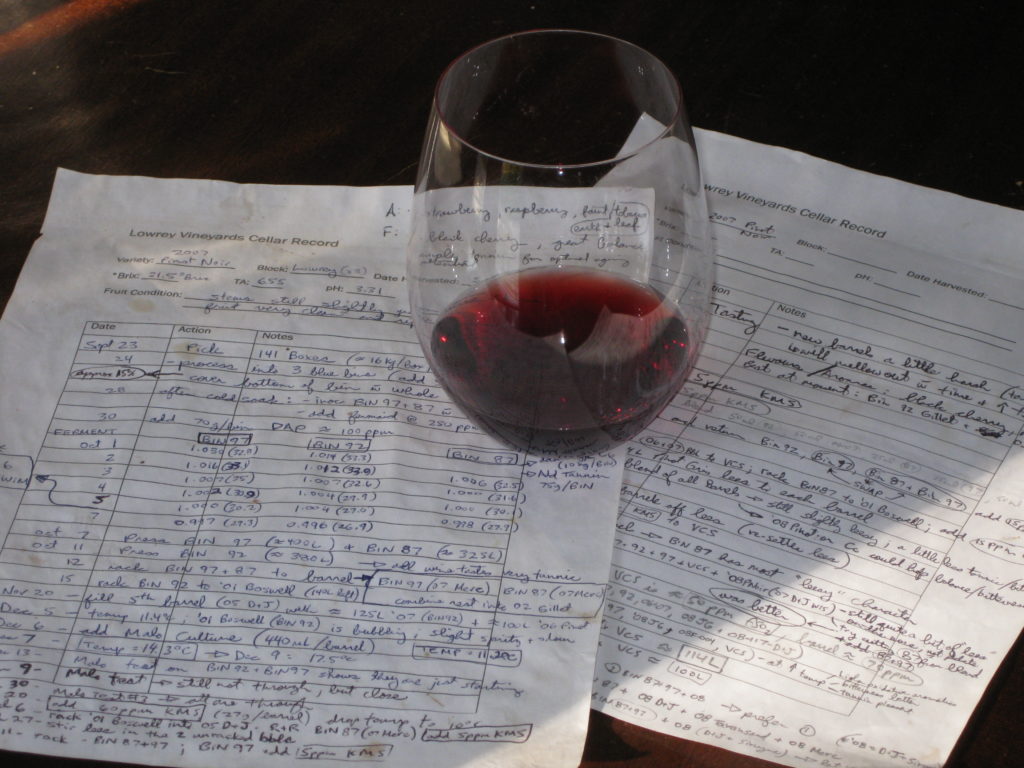
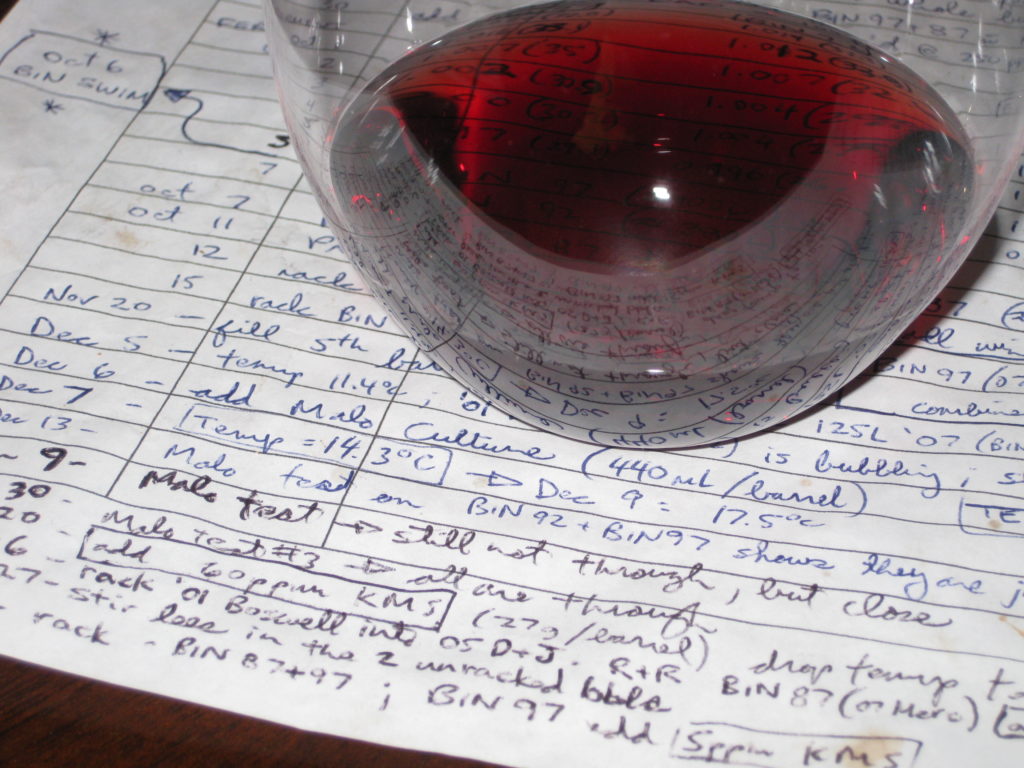
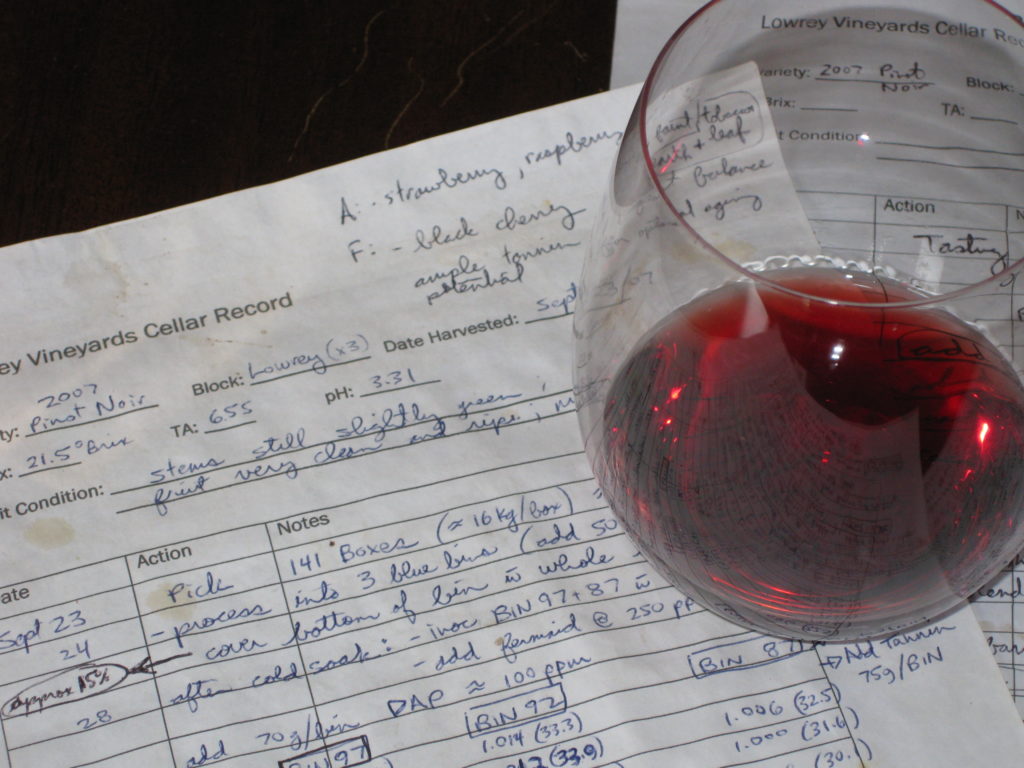
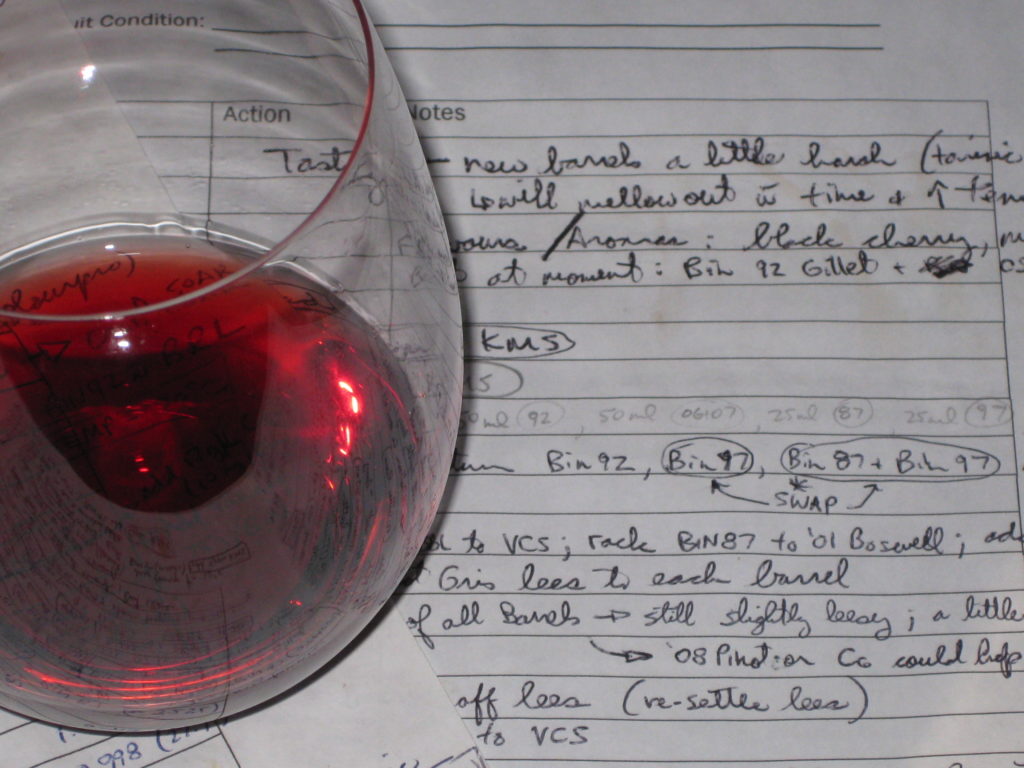
Here We Go Again
Starting Saturday May 1st, the barn doors will be open once again. I encourage all friends of Five Rows to stop in for a quick sip and chat. We’d love to hear how your winter was and give you a sneak peek at our upcoming release schedule. All the wines are drinking well right now and, consequently, their numbers are dwindling rapidly.
Make sure to bring your boots and take a leisurely stroll through the vineyard. It’s a great time of year to witness new buds popping right before your eyes. I’d be happy to lead a tour for anyone interested. Thanks to the wonderful spring weather that’s graced Niagara, we are a good 10-14 days ahead of a normal year. As I envision what the 2010 vintage could potentially become, I hear the voice of my wise and battle-tested father reminding me not to count my chickens just yet.
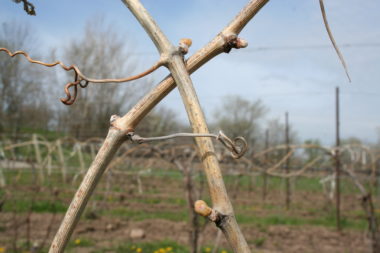
At Long Last
Since deciding to start a winery, the question I get asked most is, “so when is the Pinot going to be ready?”. I’ve stalled and tap-danced around the answer for about a year now, but not any longer.
Twenty-three years ago, five unassuming rows of Burgundian Clone 115 Pinot Noir were planted by a skeptical crew of individuals amid concerns about the future of a seemingly faltering grape and wine industry. Would these vines even live to produce a crop? Only time would tell.
No doubt my eagle-eye grandfather drove the tractor that fateful day, as this most important job meant the difference between straight and crooked rows. To this day I’m amazed at his accuracy each time I gaze down a row in that vineyard. The unsung heroes of the operation were the two women perched precipitously upon the planter as it was tugged violently behind the tractor. My Mother and Aunt Pat were responsible for placing the young vines into the freshly harrowed trench at consistent intervals, all the while being tossed about on their cast iron seats. Timing is everything, as vines planted too close together or too far apart can create a trellising nightmare (by the way, this is all done with laser and GPS nowadays). I’m sure they were made well aware if any of the vines looked a little out of place! Trudging along solemnly behind the operation was my Father, personally tamping and straightening each vine. Did he have an inkling that one day I’d be writing about this? Probably not. At the time he didn’t know a Pinot from his elbow, so most likely he would have laughed at the thought of his young son as a blog-writing winemaker. His deep connection to these original vines was evident in recent years when I saw him conspicuously wipe away few tears as we uprooted out some old, grisled vines that didn’t make it through winter. Maybe it was just something in his eye.
Ironically, the rough clay-loam and limestone soil being cursed by the planters that day ultimately proved to be a key factor in the future success of these vines. From the first wines made out of this fruit, it was apparent that the enigmatic effects of Terroir could be applied to this small patch of land in St. Davids. The Reserve Pinot Noir produced by Inniskillin in the early 90s was much sought after and helped to elevate the image of Niagara wines as a whole. The success of this Pinot spawned a collaboration project between Inniskillin and a counterpart in Burgundy. Their goal was to produce a Niagara Pinot Noir that could stack up with the finest Grand Cru. French Negotiant Bernard Repolt of Jaffelin was commissioned to select barrels from the Inniskillin portfolio that best represented the beloved wines of his homeland. After an exhaustive search that involved physically tasting soil (“mmm….loamy”) from the vineyard origin of each barrel, he and Inniskillin winemaker Karl Kaiser worked in tandem to come up with a final blend. These critically acclaimed “Alliance” wines sold out lightning fast and really helped put Inniskillin on the map. The fact they ended up choosing Lowrey barrels for the project dramatically changed the focus of our farm and probably had a lot to do with my future choice to become a winemaker. From that point on we weren’t growing grapes, we were growing wines.
Crafting my 2007 Pinot Noir from these same five rows was an exciting process that really brought things full circle. There were plenty of anxious moments, but earlier this year as the wine went into bottle I felt a certain catharsis, knowing there was nothing more for me to do. I have 99 cases of this wine and plan to release it early this summer. If you are interested in reserving a six-bottle case ($300) please let me know soon (wes@fiverows.com). In an effort to maximize distribution I must limit orders to 2 cases.
I’ll follow up with tasting notes and cellar details of this wine closer to the release date.
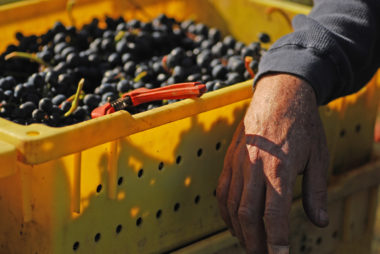
Love for the Label
I must confess that on occasion I purchase a bottle of wine solely based on the packaging. Don’t lie, I know you do too. After narrowing my search down to a couple of contenders, I’ll often end up choosing the wine whose visual appeal I find more intriguing. This is especially true of those wines I intend to age in my cellar. They are the ones that look so stately all lined up on the rack, the ones I will debate over and over in my mind when to drink. There is a strange bond formed with these wines over time, making it very heart-wrenching to finally insert the fatal corkscrew. I see the beautiful packaging as a constant reminder that this wine is a unique, living work of art.
It has always been very important to me to have my wines showcased in a way that catches people’s attention and relays our message of quality and scarcity. For this reason I’m very proud of our label designers, Insite Design, for some recent praise they’ve received on their work. The Five Rows label has been commended by many global wine design sites (here is an example), as well as being included in a prestigious packaging annual entitled “Boxed and Labelled – New Approaches to Packaging Design”.
Also keep an eye out for “The Art & Design of Contemporary Wine Labels”, a soon to be released book written by Toronto author Tanya Scholes. A true wine label aficionado, Tanya contacted me shortly after our initial launch to get some details about our winery and inquire if she could use our label and story in her book. I look forward to seeing her finished product in August.
A Blank Canvas
After a brief respite, work in the vineyard has begun again in earnest. It’s time to evaluate just how many buds have made it through winter, then make an educated guess at how many to leave for the upcoming season. We look at things like bud viability, cane density, internodal gap distance, and the long-range forecast before making our first cuts.
Generally, we prune our vines back to two trunks, each housing a cane of ten or so buds. We’ve been lucky with a mild winter to this point and bud viability is relatively high compared to previous years. However, one frigid night can quickly change this rosy outlook, so as an insurance measure we’ll leave a third cane on one of the trunks just in case March decides to go out like a lion. This third cane is left untied early in the spring then either cut off or tied down at a later date based on how many total buds survive through the dreaded frost window.
The art of pruning may seem like a boring, monotonous chore to some, but I actually quite enjoy it. I look at each vine as a blank canvas, ready to be fashioned into a viticultural masterpiece. Laugh not, for the responsibility to empower a vine to produce stellar fruit should not be taken lightly. This important task of renewal sets the tone for the year ahead and restarts the cycle of life. With each successive snip of the pruners, it’s hard not to anticipate and envision the bounty this vine will bring us in the fall.
A Great Night
Congratulations to all Cuvee 2010 Award winners! I applaud all those whose hard work and vision created a work of art that was recognized by their peers as exceptional. From the grape growers to the winemakers; the cellar hands to the lab rats, all deserve the highest of praise.
The evening itself more than lived up to my expectations. A packed room of enthusiastic wine lovers streamed around like kids on Christmas morning, eyes wide and not knowing which present to open next. The food stations were splendid and really helped highlight the true stars of the night – the wines.
The proudest part of the Cuvee experience for me occurred just after stepping away from our table for a few moments to grab a bite to eat. Upon returning, I was inspired by the size of the crowd around our table and the joy in my parents’ faces as they merrily poured samples and held court. It dawned on me that we’d reached a milestone this night, and accomplished it together as a family. In many ways it legitimized the risks and stress involved in our journey thus far. To have our wines showcased alongside award-winning juggernauts like Creekside, Fielding, Flat Rock and Thirty Bench was truly a thrill.
Based on the amount of “repeat pours” and those who were “sent to try your Cab” I would conclude that our wines were very well received. A few of my winemaking colleagues even noted a distinct “Five Rows buzz” in the air, but I actually think they may have been sensing the sheer amount of alcohol being metabolized in the room that night.
Cuvée 2010
One of the marquee events on the Ontario wine scene is the annual Cuvée celebration held every February. Although fruit from Lowrey Vineyards has graced award-winners in years past, Cuvée 2010 marks the first time our own wines will be showcased and we’re very excited to attend. You will hear words like “Oscar’s”, “Pomp”, and “Circumstance” used to describe the event, but simply put, it’s a weekend-long showcase of our best stuff. It’s billed as more celebration than competition, but I assure you that all participating winemakers will secretly have their fingers crossed in hopes of a podium appearance on Gala Night. Trust me though, based on some of the stupendous wines I tasted at the judging event last month, I won’t be penning any anticipatory acceptance speeches anytime soon!
Due to the 50-case minimum production requirement, we were only able to enter our 2008 Pinot Gris and 2008 Sauvignon Blanc into the competition. Those visiting our winery over the February 19-21 weekend will get to sample those two wines along with our 2005 Cabernet Sauvignon (45 cases produced). Our barn will be open to the public all three days of Cuvée from 11-5. Tastings, as always, are complimentary. Tickets to the Gala event and Cuvée en Route passes can be purchased here, with proceeds going to the Niagara Community Foundation. I encourage all those with a keen interest in tasting some of Ontario’s best wines to attend and join in the fun.
Beckta
Our 2005 Cabernet Sauvignon took a road trip recently, and ended up finding a new home in our nation’s capital. Beckta Dining & Wine, on Nepean Street in Ottawa, is the latest member of our extended Five Rows family. I haven’t had the opportunity to dine there yet, but countless “foodie” acquaintances have assured me that our wine is in good hands. The refreshing philosophy at Beckta is to “change involved and sometimes intimidating culinary experiences into the comfortable and remarkable”. Sounds like my kind of place!
Closer to home, Five Rows was recently featured in an article by wine writer Rick VanSickle of the St. Catharines Standard. You can read it here.
My Little Helper
Finally…some quality time with Lucy!

I get a chuckle when I look at how much she’s changed over her first nine months of life. Here is the pictorial evidence.
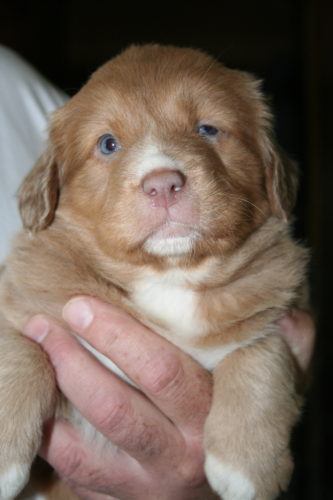


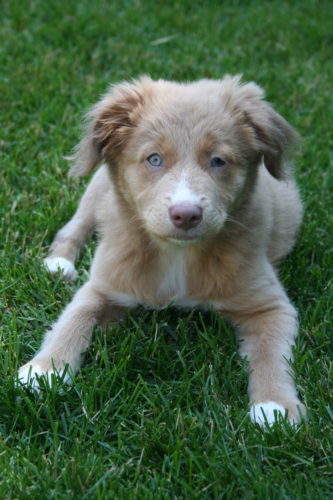
Zoltan Szabo Reviews
Sommelier Zoltan Szabo is a jack of all trades on the Toronto wine scene. A wine consultant, writer and educator, his vast enological knowledge has been proven time and again through consistently high finishes at International Sommelier competitions. His dashing personality and skill with the pen make him a personal favourite of mine. For that reason, I was slightly starstruck to receive an email from Zoltan wishing to try our wines. Casting jitters aside, I had him try our current Five Rows portfolio. Here are his thoughts:
“The wines are clean, varietally really accurate, honestly-made, not ambitious nor over-blown stylistically speaking, all natural with unmistakable signs of the love of land and winemaking passion.”
2008 Pinot Gris Five Rows, Lowrey Vineyards, St. David’s Bench, Niagara Peninsula VQA
Tastefully done package, some label descriptors are hand-written, also indicating the exact count of the bottle you are tasting, in this case the 112th. The colour has a tiny tint of cooper, characteristic of the grape. Aromas of white peach and pear, white blossoms and spice. Medium bodied with slight oily texture, sweet white summer fruit and orange toffee-nutty flavours, and a pretty long star anise, mineral-accented finish. 57 cases produced. $25.
4 stars out of 5.
2008 Sauvignon Blanc Five Rows, Lowrey Vineyards, St. David’s Bench, Niagara Peninsula VQA
Lime, kiwi, lemon tree blossom bouquet. Light and fresh over the palate with savoury fruit and mineral flavors and the finish brings along very pleasant honeydew melon nuances. A delicate Sauv Blanc here, perfect with pure, Willapa Bay Kumamoto oysters. 64 cases produced.
4 stars out of 5.
2005 Cabernet Sauvignon Five Rows, Lowrey Vineyards, St. David’s Bench, Niagara Peninsula VQA
Classic, old world-style Cab Sauv with aromas and flavours of blueberries, plums, currants, white pepper, tobacco and underlying scorched earth and gamey notes that I seem to find in many of St. David’s Bench reds. Medium plus bodied and dry with soft, melted-in tannins and with neat accents of boysenberries, tar-bitter chocolate and herbaceous finish. Drinking very well right now. 45 cases produced.
4 + stars out of 5.
You can read Zoltan’s blog and find more of his reviews at zoltanszabo.org.
